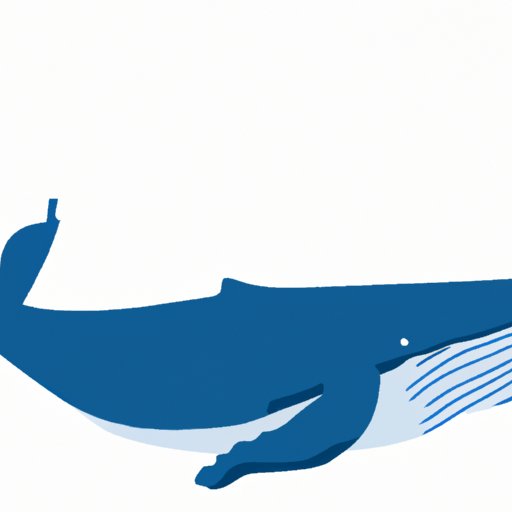Introduction
The blue whale is one of the most beloved and iconic creatures of the ocean. These massive marine mammals can grow up to 30 meters long and weigh as much as 180 tons, making them the largest animals on Earth. They are found in all the world’s oceans, from the Arctic to the Antarctic. Despite their impressive size, blue whales are quite gentle and shy, feeding mainly on krill and other small organisms.
How Many Blue Whales are Left in the World?
Unfortunately, despite their impressive size and beauty, the blue whale is now an endangered species. The exact number of blue whales remaining in the wild is unknown, but estimates range from 10,000 to 25,000 individuals. This represents a dramatic decline from their pre-whaling population, which may have been as high as 350,000.
Exploring the Plight of the Endangered Blue Whale
The decline of the blue whale population is largely due to human activities. Commercial whaling was once a major threat to blue whales, as they were hunted for their meat, blubber, and oil. Even after the International Whaling Commission banned commercial whaling in 1986, blue whales continue to face threats from human activities such as pollution, shipping, and climate change.

The Dwindling Population of Blue Whales
Current estimates suggest that there are fewer than 25,000 blue whales left in the world. This is a fraction of the pre-whaling population, and the numbers are continuing to decline. A decrease in the blue whale population could have significant consequences for the health of the world’s oceans. Blue whales play an important role in the marine ecosystem, and their decline could lead to a decrease in biodiversity and changes in ocean food webs.
What Can We Do to Save the Blue Whale?
Fortunately, there are steps that can be taken to help protect the blue whale. Governments, non-governmental organizations, and citizens can all play a role in conserving this species. Reducing pollution, protecting critical habitat, and monitoring whale populations are all important steps in protecting the blue whale. Additionally, increasing public awareness about the plight of the blue whale can help to encourage conservation efforts.

The State of Blue Whale Conservation
International regulations and agreements have been put in place to help protect the blue whale. For example, the Convention on the Conservation of Migratory Species of Wild Animals (CMS) is an international treaty focused on conserving migratory species, including the blue whale. Additionally, regional initiatives and organizations have been formed to help protect the blue whale, such as the Global Ocean Biodiversity Initiative (GOBI).

A Look at the Future of Blue Whale Populations
It is difficult to predict what the future holds for blue whale populations. If current conservation efforts are successful, it is possible that blue whale numbers could increase in the future. However, there are still many challenges facing blue whale conservation, such as climate change and ocean acidification. It is important that we continue to take action to protect the blue whale and its habitat if we want to ensure its survival.
Conclusion
The blue whale is one of the most beloved creatures of the ocean, but unfortunately, it is now an endangered species. The exact number of blue whales remaining in the wild is unknown, but current estimates suggest that there are fewer than 25,000 individuals. Human activities such as whaling, pollution, and climate change have had a devastating effect on blue whale populations. Fortunately, there are steps that can be taken to help protect the blue whale, such as reducing pollution, protecting critical habitat, and increasing public awareness. It is important that we continue to take action to protect the blue whale and its habitat if we want to ensure its survival.


